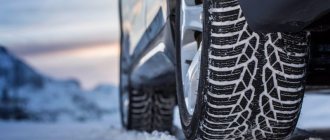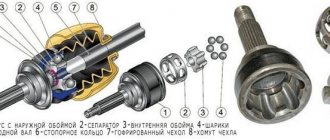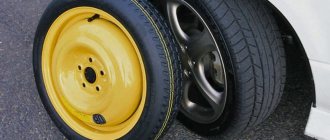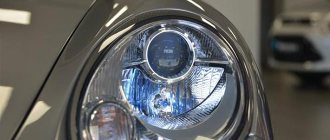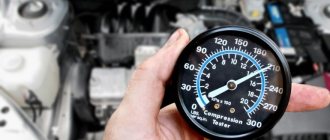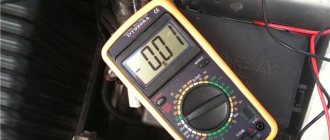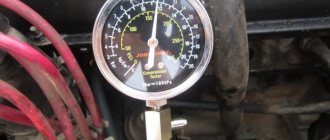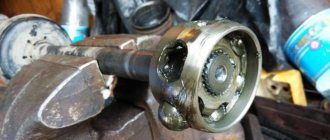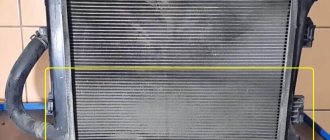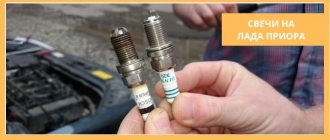Why do you need lubrication anyway?
Any competent motorist understands why lubrication is needed. With its help, premature wear of metal elements that are subject to friction is prevented. In addition, such a substance allows you to reduce the load on components and allow them to rotate freely.
Grease for CV joints also performs a number of other important functions. Thanks to it, you can greatly reduce fuel consumption, as well as reduce transmission losses of the machine. In addition, such a substance helps prevent the occurrence of corrosion (namely, rust is mainly the cause of failure of CV joints).
If you are thinking about what you can replace the lubricant with, then you should choose substances that are gentle on organic matter and synthetic polymers. Indeed, for additional protection of this unit from external influences, anthers made of plastic or rubber are used. It is important that the lubricant does not dissolve such materials.
Which lubricant is best for CV joints - review article
- an integral element of the suspension of any front-wheel drive car.
It is a guarantor of uniform straight-line movement, the service life of which is comparable to the service life of the car itself, however, only in the case when it is constantly properly maintained - diagnostics are carried out, timely replacement of fastening clamps, a rubber boot and, of course, lubrication are carried out. Diagnosing a unit and replacing its components are simple procedures, even a beginner can handle them, but the question of which lubricant is best for a CV joint can confuse even experienced motorists, because lubricants, like joints, are different. Our article will tell you how not to get confused in all this diversity and make the right choice.
Main characteristics of the lubricant
Based on the tasks of lubrication for tripods and other types of CV joints, the characteristics that such a substance should have include:
- wide temperature range. Thanks to this, the unit will operate normally in any temperature conditions. It is also worth remembering that inside the node the temperature reaches 100 degrees Celsius or more;
- high level of adhesion (assumes good adhesion to the surface). To put it simply, the lubricant should be sticky and stick to the surface of the assembly;
- high anti-scuff properties. As a result, the substance will be able to ensure normal sliding of the element over a long period;
- mechanical and physico-chemical stability of the composition. It is important that the lubricant maintains its effectiveness, regardless of the external environment.
Below is a video about choosing a lubricant for a CV joint:
Main characteristics of the lubricant composition
A competent motorist will not ask such questions, since he already knows the answer. The situation is completely different with novice drivers and mechanics. To help, it’s worth talking in more detail about how CV joints benefit from lubrication. We are talking about the following points:
- prevents premature wear of parts that are constantly under load and subject to friction;
- the substance can reduce the load on other components due to the fact that the parts can rotate freely;
- there is a reduction in fuel consumption and a reduction in vehicle transmission losses;
- the lubricating mass prevents corrosion from penetrating into the mechanism.
Since it is important for many motorists that the lubricant performs all its stated functions, manufacturers are trying to develop formulations whose characteristics allow this to be done. If you try to list the parameters that such products have, you will get the following list:
- wide range of temperatures during use - up to 100 degrees Celsius, and sometimes more;
- ensuring strong adhesion to the surface, in other words, the lubricant is very sticky;
- excellent anti-scuff properties. The composition ensures normal sliding of the part over a long period;
- stability in mechanical, physical and chemical terms. It is extremely important for manufacturers that the lubricant retains its properties regardless of the external environment and loads.
Lithium
They arose almost immediately after the CV joints themselves. As a result, such a substance is in good demand.
The composition is based on a lithium solution and organic acid. The result is a yellowish, viscous substance that thickens as temperatures drop, making it much more difficult to spread in winter. Using compositions of this type, it is possible to reduce the load on drive elements by a couple of tens of times.
At the same time, we are pleased with the high preservative properties of the substance. It prevents dust, dirt, moisture and other elements from penetrating metal elements. At the same time, such compositions are very aggressive, so they can dissolve anthers. Read the manual for your car. It indicates whether the use of lithium substances for lubricating joints is permissible.
Recently, lubricants of this type have become somewhat less popular, giving way to more innovative options. At the same time, they can still be found on the market. The most popular options now are XADO, Very Lube and RENOLIT.
Molybdenum
A more progressive option, which is made from the same lithium soap, only now the additive is molybdenum disulfide. Lubricating properties are the same as the previous version. At the same time, molybdenum compounds have one important advantage - they have high anti-corrosion properties.
This was achieved by using metal salts in the composition, which replaced some acids. In addition, the substance is completely safe for rubber and plastic elements, so it will not lead to premature wear of the boot.
One of the disadvantages of such a substance is its low resistance to moisture. As a result, if even a little water gets under the boot, due to certain chemical reactions the composition turns into an abrasive. This only promotes friction, which leads to a number of CV joint failures. To prevent such a situation, it is necessary to regularly check the node.
There is also an opinion that the use of molybdenum lubricants leads to the restoration of damaged transmission components. This statement is incorrect, so if you hear a crunching noise in the CV joint, it is better to contact the service center technicians.
Among the most popular options available in our country are CV joints-4 and LM47 lubricants.
Barium
Recently, such CV joint lubricant has been in increasing demand on the market. The progressive composition allows you to extend the service life of the hinge, as well as protect it from a number of negative influences. The main advantage here is that the substance is not at all afraid of moisture.
Thus, if the boot ruptures, there is no need to change the substance. In addition, the lubricant has excellent corrosion resistance and is also suitable for use even in fairly aggressive conditions. The composition is chemically neutral, so the anthers will not be damaged, regardless of the material of the seals.
The main disadvantage of such a substance is its relatively high price, which is caused by the complexity of the production process. We produce only ShRB-4 lubricant; everything else has to be purchased in other countries.
At the same time, the latter option is even more expensive. Another drawback of this composition is its inability to withstand low temperatures.
What lubricants should not be used
There are also a number of compounds whose use is not recommended. Among other things, it is worth highlighting the following types of compositions:
- graphite. Such substances are suitable as a lubricant for bearings and a number of other elements in electric motors. The use of graphite lubricant on CV joints is inappropriate, as this will lead to failure of the unit after 20-25 thousand kilometers. In addition, low-quality substances are often added to such compositions, which only further accelerate the wear of moving parts;
- hydrocarbon (including technical petroleum jelly). Yes, such compositions prevent the penetration of moisture and also inhibit the development of corrosion. At the same time, when the temperature reaches 45 degrees Celsius, the substance will begin to break down. Since the temperature in the CV joint is an order of magnitude higher, the use of hydrocarbon compounds will lead to deformation of the unit over time;
- consistency compositions made from calcium or sodium. They are suitable for bearings and a number of other moving joints, but in the case of CV joints they show complete incapacity and also contribute to the development of corrosion. After only 15-30 thousand kilometers, metal elements can completely fail;
- zinc. Such compositions, like iron-based substances, are completely contraindicated as transmission lubricants, since they lead to a deterioration in its functional characteristics, as well as complete failure.
Which lubricant to choose?
Each of the types of CV joint lubricants just presented has an equal chance of being called the best, it all depends only on what criterion is used to award this title, so the final choice, as always, is up to you: if you want to save as much as possible, choose lithium compounds , just first carefully read the operating manual of your vehicle to see if they can be used; If you want, as they say, to apply it and forget it, then your choice should fall on barium compounds; in all other cases, use a lubricant based on molybdenum disulfide, just do not forget to monitor the condition of the boot.
RAVENOL Mehrzweckfett mit MoS-2
This product is produced in factories located in Germany. The basis of the composition is molybdenum disulfide. Operation of the substance is indicated at a temperature range of -30-+120 degrees.
The composition is resistant to moisture, including salt water. The cost is 2-3 times higher than in the case of domestic analogues, but here you pay for quality.
Products are manufactured in Ukraine. The option has good quality and a fairly affordable price. First of all, the models are used to protect external CV joints.
The composition does not contain molybdenum disulfide, but there are revitalizants - substances that significantly slow down the wear and deformation of not only the hinge itself, but also a number of other components and mechanisms. The lubricant can withstand temperatures from -30 to +140-150 degrees
How to choose a lubricant for a CV joint?
The constant velocity joint (CV joint) is an important part used in front-wheel drive and all-wheel drive vehicles. The CV joint transmits torque from the transmission to the wheels, while being subjected to serious shock loads; therefore, special lubricant is necessary: it protects CV joints from premature wear and corrosion.
Constant velocity joints come in a variety of designs, but there are two main types used in the modern automotive industry. The first type is the classic Rzeppa-Lebro joint with 6 balls. This type of CV joint is now most common as external wheel drives of front-wheel drive passenger cars and off-road all-wheel drive vehicles, less often used as internal or cardan joints. The second type is a tripod joint, which has smaller rotation angles, but allows higher speeds and axial displacements, and is used mainly as internal joints in passenger cars. These two types of joints require two completely different types of lubrication.
The Rzepp ball joint, due to very significant contact pressures, requires a lubricant, depending on the load, containing from 3% to 5% molybdenum disulfide. The lubricant is made on a mineral base, lithium complex soap is used as a thickener, and EP additives are often added to increase load-bearing capacity. The service life of such a hinge and the lubricant itself is very long and approaches the service life of the car itself, if not for the rubber covers. Quite often, covers tear due to mechanical stress. If the rupture of the cover can be quickly determined, then it is enough to simply change the cover and lubricant; if not, then the hinge itself must be replaced. Most manufacturers supply spare parts with covers, along with CV joint lubricant in an anonymous plastic bag, often in insufficient quantities. The CV joint may require from 40 to 90 grams of lubricant. Lubricants for CV joints from different manufacturers can differ significantly from each other, both in price and in properties, and you should not think that the spare parts are supplied with products of the highest quality. That is why Liqui Moly offers a special lubricant for CV joints LM47 Langzeitfett + MoS2 in separate packages of 100 and 400 g. LM47 is significantly superior to standard lubricants and is suitable for the highest loads and speeds, and contains additional (except for molybdenum disulfide) anti-seize additives based on zinc-phosphorus compounds.
Tripod-type joints, due to the increased temperature (proximity to the gearbox and design feature), require high-temperature lubricant without solid inclusions, and the penetration (viscosity) of such a lubricant is slightly lower than that of classic lubricant for CV joints. Tripods use a lubricant with a polyurethane thickener, first class penetration, an upper temperature range of up to +180°C and a mandatory EP complex.
The correct choice of lubricant for constant velocity joints is the key to a long service life, as well as a comfortable and safe ride.
How to change the lubricant
When the question of how to replace the lubricant has been decided, you should think about how to carry out this process. It is worth noting that the procedure is distinguished by its simplicity, so that even the most inexperienced drivers can easily cope with all this.
It is only important to follow the following points:
- disassemble the body. Quite often, two locking rings are used to secure it together. To remove them, you will have to use a flathead screwdriver;
- dismantle the boot and seals. It is very important to check the integrity of these elements. In case of visible damage, it is necessary to purchase a new element;
- we take out the internal parts, after which we completely disassemble them;
- We wash all elements with gasoline or solvent. This will help remove old grease.
It is also important to clean the internal walls of the case from the substance:
- put a little lubricant in a glass;
- place the tripod on the axis in its place;
- We report more substances. It is important to do this evenly to fill the case as much as possible;
- We assemble the unit.
What is a tripod CV joint?
The tripod constant velocity joint is a relatively young unit. It was invented in 1963 by French engineer Michel Oren. Initially, this mechanism was installed on cars of French brands.
The tripod CV joint is based on rollers that rotate in needle bearings located on a three-beam support and moving along guides. There are mechanisms of universal and rigid types. Universal tripods transmit torque at an angle of up to 25 degrees and allow axial movements. Such mechanisms are used as internal CV joints. Rigid sets do not allow axial movements, but provide a larger rotation angle of up to 43 degrees. They are used as external hinges.
Structurally, universal and rigid tripod CV joints have significant differences. In the first, a three-beam support from a roller is installed on a driven shaft fork inserted into the drive shaft housing. The rollers move along spherical grooves that are cut into the walls of the bowl. A universal tripod CV joint is called a unicardan due to the possibility of axial movements.
The design of a rigid tripod looks exactly the opposite. The support with rollers is motionless and fixed in the casing of the drive shaft. This design houses a spherical fork, which is connected to the driven shaft. The rollers themselves move along the grooves of this fork.
Universal joints are used for the inner CV joint in modern cars. Hard tripods are used extremely rarely.
Advantages of tripod CV joints:
- Simplicity of design
- Operates at a 45 degree angle without shock or play
- High efficiency due to needle bearings
- Increased amount of longitudinal movement
- High resistance to torsion
- Resistance to loads at maximum rotation angle
- Ease of maintenance and repair
- Reliability and durability
The internal tripod CV joint is characterized by a large margin of safety. With proper maintenance and normal operation, this unit practically does not break down. But if the anthers are damaged or if driving is aggressive, they fail. The following symptoms may indicate a malfunction of the tripod:
- Vibration during acceleration
- Vibration while moving
- Crunch when moving from the CV joint
- Knock when driving at low speed from the CV joint
If the above-described signs are detected, you need to drive the car into a pit or go to a service station to assess the condition of the boots and CV joints. If the integrity of the protective casing is damaged, the assembly must be disassembled, cleaned, assessed, lubricated/replaced and reassembled.
How often to change the lubricant
As a rule, replacement is required after 50-60 thousand kilometers, but here you need to read the instructions - for some manufacturers the lubricant service life can reach as much as 100 thousand km.
In addition, if the vehicle has not been used for 9 months, or has been rarely used for 18 months, then it is also recommended to replace the substance. At the same time, in some cases the composition must be replaced prematurely, so it is worth checking the condition of the lubricant sometimes.
We strongly recommend that you regularly change the CV joint lubricant, following the instructions and rules established by the vehicle manufacturer. Remember that the cost of such a procedure will be an order of magnitude lower than repairing or replacing the hinge itself. As for the choice of substance, the modern market offers a fairly large assortment of lubricants. There is no need to save money and buy the cheapest substances. It is better to trust trusted manufacturers. Moreover, the difference in price will be relatively small.
Next is a video about the best lubricant for CV joints:
Each vehicle component has its own operating and maintenance features. Before purchasing anything, you should read the instructions and find out the recommended lubricant.
Lubricant selection
If the manufacturer does not indicate which lubricant to use for CV joints, then you can use a universal product. You should choose carefully, since the device is operated under serious loads.
For your information! All lubricants are made from petroleum. Beware of fakes.
In auto stores you can purchase a special mixture, which differs:
This is required to keep the substance on the surface of moving parts even at high temperatures. The oil features:
- stability of characteristics under changing conditions;
- anti-corrosion properties;
- the ability to retain its original characteristics for a long time.
When to change the lubricant
The viscous substance in CV joints is replaced in the following cases:
- with a unit mileage of over 100 thousand km;
- when replacing the assembly boot;
- when replacing the CV joint itself.
The amount of lubricant required when replacing is indicated:
- in the car’s operating manual – not always;
- always on the packaging.
When does the CV joint lubricant change?
The lubricant is replaced in the following cases:
- torn boot and its replacement;
- replacing the angular velocity adjustment hinge;
- CV joint operation for more than 5 years;
- mileage over 100 thousand kilometers.
You should not apply a large amount of lubricant, this will not provide better protection, but will only increase the likelihood of damaging the anthers. There should be enough lubricant so that the part is completely lubricated and no grease drips from it.
How much grease should I fill into the CV joint? It all depends on whether it is indoor or outdoor. For an internal CV joint, 100-110 grams is enough, and for an external CV joint, 70-80 grams.
Disassembling the unit and lubricating it
Disassembly of the internal CV joint (TRIPOD)
Attention! Remember the locations of the parts of the assembly. Make marks. Everything should go back to its place, especially the balls.
Parsing algorithm for replacement:
- Unscrew the hub nut.
- Discard the balls.
- Loosen the inner CV joint boot.
- Bend the posts.
- Get the part.
- Remove the retaining ring.
Lubrication
Attention! Prepare materials in advance to remove old grease. Solvent must not be used.
The removed parts must be cleaned to a shine. It is advisable to use paper to remove old grease, and a towel for final cleaning and polishing.
How long does the CV joint last?
Generally CV joint
- a node with a fairly large resource. With proper operation, it can last for tens of thousands of kilometers without problems and, for quite natural reasons (having exhausted its potential), fail at a mileage far exceeding 100 thousand km.
Interesting materials:
How to send a song via WhatsApp? How to clean the electronic throttle body? How to clean an IPS monitor? How to clean New Balance 574 sneakers? How to read books in ePub format? How to read replies on Twitter? How to advertise in wheels? How to give your back a rest? How does tire pressure affect handling? What is the cheapest way to get to Helsinki?
Indiscriminate replacement
You can replace the lubricant in the CV joint without removing its components. To do this you need:
- Remove the CV joint itself from the car.
- Insert the tip of the tube and press the oil into the assembly.
- Press the tube tightly and wait until the color of the substance changes to fresh.
- Wipe the part, removing excess substance.
- Put the part in place.
Attention! This method has one drawback - a thin layer of old substance remains on the walls of the parts inside.
There is no need to rush to use the lubricated unit when driving. It is worth turning the assembly in place while the car is suspended on jacks. This is necessary to evenly distribute the lubricant over the parts.
Attention! On a car with an automatic transmission, with the wheels hanging, the pressure in the system will quickly drop.
The replacement process is not that complicated and if you have a minimum set of tools and skills, you can easily do it yourself. This will save money and allow you to get a better feel for the car. And remember, high-quality replacement of lubricant in CV joints cannot be done without removing it. If it is not possible to remove the assembly, then it is better to go to a car service center and see specialists.
- How to change the front silent blocks on a Mercedes 211 4matic
- How to change silent blocks on a Daewoo Nexia
- How to change silent blocks on Mazda cars 3-6
- How to change silent blocks on a Chevrolet Aveo: video
Components of the unit
The unit has been known to mankind for a long time and is indispensable in cars. The design is simple and, with proper maintenance, will serve without fail and for a long time.
Components of the CV joint:
- body – in the form of a bowl;
- clip with oil - located inside;
- separator – annular hole;
- six balls - like in a bearing.
For trouble-free operation of the device, its timely maintenance is required. Since the unit contains rubbing parts, they need to be lubricated for the following purposes:
- reducing friction;
- reduce wear;
- reducing the load on rubbing parts;
- protecting metal from corrosion.
Oil does not last long and should be changed periodically. But questions arise:
- Which mixture should you choose?
- How to do it?
- How much mixture should I fill into the CV joint?
Molybdenum grease and its application
Molybdenum grease is one of the most common lubricants for industrial units and machine systems. And this is not surprising. Molybdenum disulfide (MoS2) exhibits excellent extreme pressure and anti-wear properties, helps prevent premature aging of the metal and protect friction units during severe mechanical loads. The compound of molybdenum and sulfur is mined in the form of ore, then purified and takes the form of black fibrous crystals that, when rubbed, leave a gray-green mark. Lubricants with molybdenum disulfide are characterized by high adhesion to metal surfaces. This means that a protective microfilm is formed on the surface of the friction unit part, which levels the working surface, preventing the formation of scuffing and reducing the temperature in the friction area.
Distinctive properties of lubricants with the addition of molybdenum disulfide:
- High specific strength;
- Chemical stability;
- Temperature resistance;
- Low coefficient of friction;
- Good alloying properties;
- Anti-seize qualities.
NPP MAPSOL LLC has molybdenum lubricants in its product line, which are perfect for use in machine tool building and the automotive industry for lubrication of ball and roller bearings, worm gears and hard-to-reach components.
Greases with molybdenum disulfide under the MAPSOL trademark are the optimal choice for servicing units and mechanisms operating under heavy loads and high temperatures.
What is a CV joint, its functions and types
Before we move on to talking directly about lubricants, let’s take a closer look at CV joints. This will be useful in order to find out what properties a lubricant for a “grenade”, as the CV joint is popularly called, should have, and what composition to use in a given case. The purpose of the hinge is to transmit torque from one axis to another, provided that they are at an angle to each other. This value can be up to 70°.
In the process of their evolution, the following types of CV joints were invented:
- Ball . They are one of the most common, in particular their variant “Rtseppa-Lebro”.
- Tripod . They are often used in the domestic automotive industry as internal CV joints (that is, those installed on the power drive side).
A feature of any angular velocity joint is high shock loads. They occur when starting a car, climbing hills, driving on uneven roads, and so on. With the help of special CV joint lubricants, all negative consequences can be neutralized.
Properties of lubricants for constant velocity joints
Due to the difficult operating conditions of the mentioned joints, CV joint lubrication is designed to protect the mechanism from negative factors and provide:
- increasing the coefficient of friction of the internal parts of the hinge;
- minimizing wear of individual parts of the CV joint;
- reduction of mechanical load on the components of the assembly;
- protection of the surfaces of metal parts from corrosion;
- neutral reaction with rubber joint seals (boots, gaskets) so as not to damage them;
- water-repellent functions;
- durability of use.
Based on the requirements listed above, the lubricant for the outer or inner CV joint must have the following characteristics:
- a wide temperature range, allowing the composition to be used at critical temperatures (modern CV joint greases are capable of operating at temperatures from -40°C to +140°C and above, this range depends on the specific brand of lubricant);
- high degree of adhesion (the ability to adhere to the working surface of the mechanism, simply put, stickiness);
- mechanical and physico-chemical stability of the composition, ensuring constant performance characteristics of the lubricant under any operating conditions;
- high anti-scuff properties, ensuring the proper level of sliding of lubricated working surfaces.
Why does a CV joint need lubrication?
It's no secret that manufacturers decided to lubricate some car parts with special technical fluids for a reason. There were reasons for this - tasks/problems that this liquid could minimize or solve. In a constant velocity joint such bases are:
- preventing the appearance and spread of corrosion - in metal elements it leads to the appearance of cavities, called cavities in CV joints, which significantly reduce the efficiency of the transmission and create a clearly audible knock when turning the steering wheel;
- reducing the coefficient of friction, ensuring free rotation of elements and, as a result, minimizing the load on the front axle transmission;
- reduction of energy losses during power transmission (less energy losses - less fuel costs);
- safety in relation to synthetic and organic polymers, because plastic or rubber boots are always used to protect the hinge joint from dust and dirt, so the lubricant used in this joint should not corrode them.
Not every lubricant is capable of solving all these problems at the same time, so let’s immediately eliminate all unnecessary things and leave only those options that meet this requirement.
What lubricants should not be used?
No matter what convincing salespeople in specialized stores tell you, never use the following for CV joints:
- calcium/sodium-based grease compositions - they are not suitable for lubrication of highly loaded components, deviation from this recommendation is fraught with accelerated spread of corrosion and a reduction in the service life of the hinge to 15-30 thousand km;
- graphite lubricant - it is not thermally stable, therefore, when used in CV joints, it reduces their service life to 20-25 thousand km;
- hydrocarbon compounds (including technical petroleum jelly) - again, due to instability to high temperatures, are completely washed out from the unit after just a few kilometers, which means the CV joint will work dry, and the longer this happens, the faster the part will need replacement;
- mineral lubricants based on iron/zinc - do not withstand increased loads and, like the previous compounds from this list, contribute to accelerated wear of the constant velocity joint.
Types of lubricants for CV joints.
Lithium (Renolit, Xado, Litol-24, Very Lube).
The most popular lubricant among car owners. It looks like a viscous, thick yellow consistency, which thickens greatly at subzero temperatures (the lubricant becomes so dense that it is practically impossible to spread).
- copes well with friction, reduces the load on the components of the drive mechanism by several tens of times;
- compatible with virtually any type of polymer used to protect constant velocity joints;
- neutralizes dust and dirt accidentally trapped inside the boot;
- practically do not allow moisture to pass through.
- poor corrosion resistance, therefore components treated with lithium lubricants should be checked at least every 50-60 thousand kilometers (with the exception of Litol-24, its manufacturers guarantee 100 thousand kilometers of uninterrupted operation);
- incompatibility with modern high-strength plastics, especially Litola-24, so if they protect the CV joint in your car, before using this or that lubricant, be sure to read the operating instructions, in it you will find recommendations on what is the best lubricant for the CV joint in your specific case.
Lubricants based on molybdenum disulfide (Mobil, Liqui Moly, BP, CV joint-4, ESSO, Texaco).
A modern analogue to lithium compounds. It looks like a thick ointment that is brown, gray or black.
- copes well with friction, no worse than lithium lubricants;
- compatible with any polymers and plastics;
- has high resistance to corrosion, however, to maintain this advantage it must be changed every 100 thousand km. mileage
- the composition is very afraid of moisture and, when encountering it, loses all its beneficial properties, therefore, the effectiveness of lubricants based on molybdenum disulfide is guaranteed only in cases of a whole boot, therefore, when using them, the tightness of the rubber/plastic protection should be checked at least once a month, and also after each off-road driving and strong impacts to the front of the underbody of the car.
Barium lubricants.
They were specially designed for use in constant velocity joints of a vehicle.
Lubricant test for CV joints: which is better
The abbreviation CV joint is an abbreviation for the phrase “constant velocity joint.” In driveshafts of rear-wheel drive cars, similar functions are performed by hinges consisting of a cross and cups with needle bearings. The only difference between them is that the cross provides a much smaller degree of freedom than the CV joint. But the cheapest CV joint is much more expensive than the most expensive spider. This circumstance increases the desire to extend its service life. For which, of course, you can use good lubricant and monitor the condition of the boot. Therefore, the question of what is the best lubricant for CV joints is natural. Timely replacement of a torn boot will also extend the life of the grenade if the lubricant is changed at the same time.
Tags: amount of lubricant in the CV joint, lubricant in the tripod
Comments 25
Thanks everyone for the answers. There were 60 cubes for each outer one, 80 for each inner one. Just like the 360g tube I bought.
The remains were smeared onto the tube. Well, I’ll scrape them off from the inside...)
80mg? this is almost a quarter of a tube))
The remains were smeared onto the tube. Well, I’ll scrape them off from the inside...)
you wrap the tube in a tube like a carpet and the tube is 98% empty...
if the tube was not included in the kit, then you buy a small one and use the entire tube for one CV joint. It was written below correctly, there is no such thing as too much lubrication.
There is no such thing as excess lubrication, the more of it, the better, usually - if the grenade comes with a tube of lubricant, squeeze some of it into the CV joint, completely covering the balls and the drive hole... and squeeze the rest into the boot about the centrifugal force - he smiled)) here’s a tube, I don’t know how many mg there are in it...
Those. The laws of centrifugal forces do not apply to CV joints? Or is it applicable with the amendment that this is a CV joint?)
Well, if there is little lubrication and centrifugal force, then probably all the lubricant will be distributed in a circle on the boot (like in a centrifuge), and the balls are dry)) The boots do not tear because the lubricant under the influence of centrifugal force tears them, they tear due to bad the quality of the boot itself, , , cracks begin on the folds, etc...
Those. The laws of centrifugal forces do not apply to CV joints? Or is it applicable with the amendment that this is a CV joint?)
You can also compare the quality and shape of the anthers, for example, Russian BRT; sharp triangular edges contribute to the rapid formation of folds and cracks...
They did the same interesting thing on Sevi. The inner one where there is a very steep bend is a rounded edge. the rest are sharper. I thought that it turned out that way for the forms))
Those. The laws of centrifugal forces do not apply to CV joints? Or is it applicable with the amendment that this is a CV joint?)
or here’s the Japanese one for Corolla and other Kaldins)) round bends and does not feel like plastic to the touch))
Wow. I don’t see the point in having an extra one, it will end up on the boot anyway. And what kind of anthers are there in the very top first photo in the black box?
Weber I took it with a grenade included (last entry in the BZ), but put 27411 (last photo)
Wow. I don’t see the point in having an extra one, it will end up on the boot anyway. And what kind of anthers are there in the very top first photo in the black box?
Lubricant for CV joints is viscous, it does not have the property of spreading like water or oil under the influence of centrifugal force, it is not fluid in general... So, the more lubricant, the longer the mechanism lives, the less friction, etc., etc. There is also Xado lubricant (not advertising) , it contains a remitalizant (or revitalizant, I don’t remember) - the lubricant sticks to the metal, reduces friction (it pokes to help) - this is exactly what was in the CV joint that was changed - there is almost no boot left, but there is plenty of lubricant!
There wasn’t enough money to replace it for hado-lubricant ((
Suprotek lubricant with ceramics is simply awesome. But a good thought comes after)
Suprotek is an easy-to-flow lubricant, you can’t pour it into CV joints, it, like wd40, will find a loophole, leak out and pull the rest of the lubricant with it. And in general, Suprotek is evil ((
I will not conduct a dialogue about Suprotek.
Nope, I’m talking about the Suprotek CV joint and not the engine can. That's why we have a misunderstanding. In general, Liqui Moth also has keratek (the same thing). Shall we have a dialogue about Liquid Moth?))) Or about what our engineers did back in the late 80s?
Suprotek is an easy-to-flow lubricant, you can’t pour it into CV joints, it, like wd40, will find a loophole, leak out and pull the rest of the lubricant with it. And in general, Suprotek is evil ((
I will not conduct a dialogue about Suprotek.
It turns out they came up with it in the 80s, then Forsan appeared, then Suprotec, then Hadot, then Liqui Moly Keratec. But in reality it turns out that Forsan and Suprotek are oh yes, evil. And Liqui Moli - well, these are Germans, the Germans won’t blame you.
Come on! All this was invented and worked out in the USSR! Back then, money was not spared for laboratory research.
And now is the era of salesmen!
And that’s how they think: the label is cooler, the name is foreign and that’s it. They'll buy it! I still have a calculator from the Minsk plant, produced in 1981. 10x5 cm, thickness - 3 mm. LCD screen. Programmable, with engineering functions. The built-in batteries (two “tablets”) lasted for a year. Modern ones, compared to it - complete bullshit!
And after that they will push it on us that our electronics are lagging behind. Not a damn thing! At the level of the best world standards.
Only the sales people don't give a damn about it. The main thing for them is to sell. It's the same with computers. It’s more profitable to buy over the hill and sell here ten times more expensive.
Do you know how much the 80286 cost complete with a monitor in 1998? 43-50 thousand rubles. Like a new nine from the factory at that time! And my office took 22-27 thousand rubles from intermediaries. Intermediaries are naturally even cheaper.
Engine lubricant with molybdenum is not a bad thing. They make it in Lithuania. It's called Mannol. The name was invented there. After using it, not a single office undertakes to sharpen the block. Ceramics on the cylinder walls completely damage the cutting tool.
Main characteristics of the lubricant composition
The grenade or constant velocity joint (CV joint) is an important functional unit that is impossible to do without in front-wheel drive cars. Previously, I did not think that the CV joint was very susceptible to breakdowns and periodically forgot to carry out maintenance of this mechanism, until the sad end of my carelessness came.
As I was told, this mechanism is very subject to serious loads, so for normal operation it is necessary to regularly service it and, importantly, lubricate it with the “correct” composition. It turned out that choosing a lubricant for a CV joint and determining which one is better is not so easy.
When I took a closer look at this issue, it turned out that some compositions have their own advantages, others have their own, but there was still no universal substance until I solved the problem differently. In general, the review will talk about what is included in CV joint lubricants, which brands and types of mixtures are of better quality, and which ones should be abandoned. If you have questions on the topic, feel free to ask them in the comments. I will help in any way I can.
Cars equipped with front-wheel drive have many advantages - they are often lighter, cheaper and easier to manufacture. Also, front-wheel drive cars have higher maneuverability in slippery areas. But there are also certain disadvantages. Thus, the CV joint in the drive not only ensures uniform straightness of movement, but also causes rapid wear of parts and components of the transmission.
To increase the reliability of drive and transmission mechanisms, a special lubricant was developed, with the help of which the situation improved. Then, many different products began to appear in the lubricant market, which created confusion and caused some inconvenience for car enthusiasts. To avoid mistakes, you should know which CV joint lubricant is most effective.
Even a novice motorist knows that the lubricant, which is used in most components, solves not only the problems of reducing friction and wear of parts. It is also designed to reduce the load that the mechanisms experience. Lubricants make rotation easier and more freely, and the car can move forward without any obstacles. In addition to reducing friction, CV joint lubrication also reduces fuel consumption and energy loss in the transmission.
The second equally important property of lubricants is the protection of metal components from corrosion. It's no secret that the bulk of all breakdowns of parts in mechanisms are the consequences of cavity corrosion. The lubricant should protect the CV joint parts from such processes and thereby ensure the durability of the unit. A good product will save the car owner from unnecessary costs.
Front-wheel drive cars, as well as their all-wheel drive counterparts, have coexisted for many decades. During this time, many types of lubricants for CV joints have appeared. In general, each composition performs its functions quite effectively. But some of the proposed lubricants have aggressive properties towards rubber or plastic. Many compounds also do not have the proper properties to combat corrosion, but this is almost the most important characteristic of CV joint lubricant.
These are mixtures of a yellowish tint and high viscosity. As temperatures drop, viscosity increases. In cold weather, lithium grease can be applied to the part with great difficulty. Lithium compounds do an excellent job of reducing friction. In addition, lubrication reduces the loads that affect the drive mechanism and its components by tens of times.
They also note the conservation properties of these materials - it is lithium-based products that maximally protect the metal from moisture and dust, as well as other pollutants.
Experts recommend that car enthusiasts regularly check the condition of the drive system and all components. The frequency of such checks is 50-60 thousand kilometers.
One of the exceptions, of which there are very few, is the domestic lithium lubricant “Litol-24”. Russian automakers recommend not replacing it earlier than after 100,000 km. Lithium-based compounds can be safely used with any polymer coatings that are used in the manufacture of boots in CV joints.
Brands
Today, among lithium lubricant manufacturers, domestic ones are leading. Many foreign companies are gradually abandoning these compounds due to the development of newer and more modern technologies. The latest developments provide maximum protection for every part in the transmission.
Despite this, there is always lithium CV joint grease on sale from the likes of Very Lube and Renolit.
Although lithium CV joint grease is highly effective, the search for new technologies and solutions continues. The composition should be ideal for all cars. As a result, new generation compounds were created. their feature is molybdenum disulfide.
This made it possible to increase resistance to corrosion. As life tests have shown, even after 100,000 km, no serious wear was detected in the CV joints.
But even this unique composition is by no means eternal - replacement will be required after a hundred kilometers.
It is noted that such compositions have a serious disadvantage. Molybdenum products are very afraid of moisture, which can get into the mechanism from the road. As a result, the composition completely loses its properties.
Everything said above is relevant only for external angular velocity joints. Neither lithium nor molybdenum products are suitable for internal components. The fact is that the internal CV joint operates at higher temperatures. The effectiveness of lithium greases is lost already at 120°, and the standard temperature for internal components is 160°.
It is recommended to use polyurea-based compounds as lubricants. Among the characteristics are high temperature resistance, resistance to exposure to liquids, and overall efficiency. A mixture based on polyurea is suitable as a lubricant for tripod CV joints. If the internal assembly is based on balls, then it is quite possible to get by with the CV joint-4 product.
As for tripoid joints specifically, they operate using needle bearings. If there are any solid particles in the lubricant, this will lead to inevitable death of the mechanism. Salespeople in stores are trying to sell motorists who knows what.
Lubricant for tripoidal CV joints can be either domestic or imported. There are suitable polyurea products in the XADO assortment. Also, many car owners recommend the Castrol LMX product, which is ideal for working in needle bearings.
Drivers often become victims of marketing - they are offered the best and most reliable product, which in reality does not have the desired properties. Thus, in the case of angular velocity joints, it is not recommended to use graphite lubricants. Hydrocarbon-based products are also not suitable. In addition, mixtures based on calcium and sodium, as well as iron or zinc, will lead to destruction of the mechanism.
So, the outer CV joints are filled with lubricant so that the composition protrudes slightly beyond the boundaries of the part. You can underfill the inner one a little - pour it so that there is about 3-5 mm left to the edge.
Today, the best option is products with molybdenum disulfide. There is high protection against corrosion and reduced friction in components. As a universal lubricant, you can use CV joint-4 or Litol-24. And the best lubricant for CV joints is the original material recommended by the car manufacturer. So be careful when choosing.
Based on the tasks of lubrication for tripods and other types of CV joints, the characteristics that such a substance should have include:
- wide temperature range. Thanks to this, the unit will operate normally in any temperature conditions. It is also worth remembering that inside the node the temperature reaches 100 degrees Celsius or more;
- high level of adhesion (assumes good adhesion to the surface). To put it simply, the lubricant should be sticky and stick to the surface of the assembly;
- high anti-scuff properties. As a result, the substance will be able to ensure normal sliding of the element over a long period;
- mechanical and physico-chemical stability of the composition. It is important that the lubricant maintains its effectiveness, regardless of the external environment.
At the moment, there is a fairly large selection of lubricants for CV joints, which differ in their composition. They may also differ in their efficiency, price and operating features. Now we will talk in more detail about all popular types of lubricants.
The most popular lubricant among car owners. It looks like a viscous, thick yellow consistency, which thickens greatly at subzero temperatures (the lubricant becomes so dense that it is practically impossible to spread).
- copes well with friction, reduces the load on the components of the drive mechanism by several tens of times;
- compatible with virtually any type of polymer used to protect constant velocity joints;
- neutralizes dust and dirt accidentally trapped inside the boot;
- practically do not allow moisture to pass through.
- poor corrosion resistance, therefore components treated with lithium lubricants should be checked at least every 50-60 thousand kilometers (with the exception of Litol-24, its manufacturers guarantee 100 thousand kilometers of uninterrupted operation);
- incompatibility with modern high-strength plastics, especially Litola-24, so if they protect the CV joint in your car, before using this or that lubricant, be sure to read the operating instructions, in it you will find recommendations on what is the best lubricant for the CV joint in your specific case.
A modern analogue to lithium compounds. It looks like a thick ointment that is brown, gray or black.
- copes well with friction, no worse than lithium lubricants;
- compatible with any polymers and plastics;
- has high resistance to corrosion, however, to maintain this advantage it must be changed every 100 thousand km. mileage
- the composition is very afraid of moisture and, when encountering it, loses all its beneficial properties, therefore, the effectiveness of lubricants based on molybdenum disulfide is guaranteed only in cases of a whole boot, therefore, when using them, the tightness of the rubber/plastic protection should be checked at least once a month, and also after each off-road driving and strong impacts to the front of the underbody of the car.
